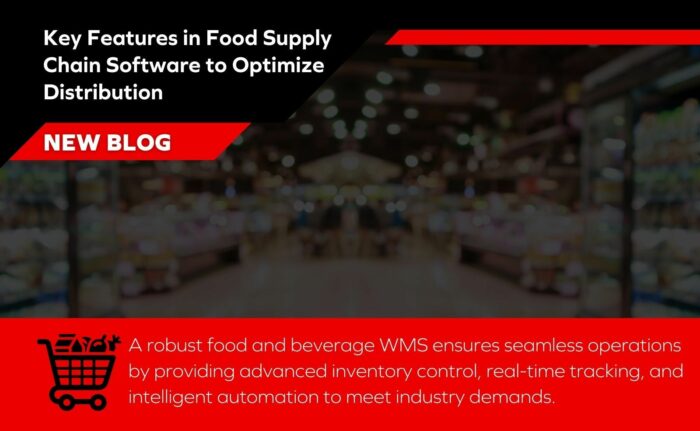
In the fast-paced world of third-party logistics (3PL), efficient warehouse management—via a best-in-class 3PL warehouse management system—is crucial. To excel in this competitive landscape, 3PLs require a specialized Warehouse Management System (WMS) that caters to their unique needs. In this blog post, we’ll answer the question, “What is a 3PL warehouse management system?”, then dive into the challenges faced by 3PLs, the essential features every 3PL WMS should possess, and tips for a successful WMS implementation.
We’ll cover:
- What is a 3PL WMS?
- What are common challenges for 3PL warehouse management?
- 5 essential features of a 3PL WMS
- Implementation and rollout
What is a 3PL WMS?
A 3PL WMS is a warehouse management system specifically built to power operations for 3PL providers, which includes multi-client management, enhanced billing capabilities, integration with multiple systems and MHE, real time inventory tracking and visibility and robust reporting.
Made4net’s 3PL WMS, for example, has extensive experience supporting a wide range of 3PL providers. For over 20 years, Made4net has been meeting the needs of 3PL customers across the globe, and, with the strategic acquisition of Zethcon and its Synapse WMS, Made4net has further enhanced its 3PL WMS capabilities, and now serves over 100 of the world’s leading 3PL providers.
Made4net’s 3PL WMS is designed for the complexity and unique demands of 3PLs, delivering rapid time-to-value and a clear return on investment. Its broad, deep functionality is packaged in a highly configurable format to optimize warehouse processes, drive revenue, and ensure end-to-end reliability.
What Are Common Challenges For 3PL Warehouse Management?
3PL Warehouse Management Challenge #1: Multi-Client Management
The heart of a 3PL business lies in managing various clients and their inventories seamlessly. Unlike traditional WMS systems, a 3PL WMS should offer robust multi-client capabilities, allowing all client inventories to be managed within a single instance of the 3PL fulfillment software. This ensures efficiency, reduces the need for constant logins and logouts, and provides distinct configuration and rules for each client, product group, and product.
3PL Warehouse Management Challenge #2: Automated Billing
Timely and accurate billing is vital for a 3PL’s profitability. A 3PL WMS must have activity-based automated 3PL billing software features. This means having the ability to capture all activities performed for clients beyond storage and handling, such as value-added services. The right WMS should prompt associates to record these activities, linking them directly to client invoices, thus eliminating manual steps and potential errors.
3PL Warehouse Management Challenge #3: Growing Demand
The 3PL market size is currently estimated at USD 1.22 trillion, and is expected to reach USD 1.59 trillion by 2028, growing at a CAGR of 5.48% during the forecast period (2023-2028). Market growth is being fueled by a rising demand for reduced shipping costs and the need to deliver goods in a timely manner. Working with a 3PL enables many companies to focus on their core competencies while leaving logistics to the experts. In order to take advantage of an expanding market, 3PLs need to be able to onboard new clients quickly. This requires a mix of the right technology.
5 Essential Features of a 3PL WMS
Every 3PL will have different needs specific to their operation, but there are a handful of features we believe all 3PLs need from their WMS to thrive.
3PL WMS Feature #1: Billing Granularity
In a cost-sensitive environment, a 3PL WMS should enable auditing of operational processes to ensure revenue capture. This includes tracking value-added services provided and aligning this data with client contracts and service commitments.
3PL WMS Feature #2: Analytics and Reporting
Deep, flexible reporting capabilities are crucial for informed decision-making. Real-time data as well as comprehensive performance history should be accessible through reporting tools.
3PL WMS Feature #3: Integration Capabilities
A 3PL WMS needs to easily integrate with carriers, suppliers, other software like CRMs and ERPs (see our ERP vs. WMS guide), plus automation systems. Cloud-based solutions often offer smoother 3PL integration.
3PL WMS Feature #4: Inventory Tracking and Visibility
3PLs deal with a range of industries and products. A robust WMS should provide comprehensive inventory tracking, especially for industries like cold storage or hazardous materials. This is essential for efficient recall management and billing accuracy.
3PL WMS Feature #5: Customer Portal and User Interfaces
Offering clients a web-based portal to view inventory and orders, along with dynamic user interfaces that streamline interactions enhances efficiency and customer service.
Implementation and Rollout
Implementing a 3PL WMS is a critical step that requires careful consideration. While some WMS vendors offer implementation services, a configurable and adaptable WMS like Made4net’s 3PL solutions can often empower 3PLs to carry out implementations with less support and cost. A team with industry-specific expertise can guide the process efficiently, shortening implementation times and ensuring a quicker return on investment no matter the 3PL software pricing.
Conclusion
Supporting a 3PL business comes with its own set of challenges and requirements. A specialized WMS designed for multi-client management, automated billing, and industry-specific needs is essential for success. By focusing on key features, integration capabilities, and industry specialization, 3PLs can ensure seamless operations and enhanced customer satisfaction. Choosing the right WMS vendor—one that understands the dynamic nature of 3PL operations—can significantly contribute to a smoother implementation process and long-term success.
See what 3PLExpert customers have to say about their success with Made4net. And, check out our favorite 3PL software reviews from real-life warehouse operations experts.


